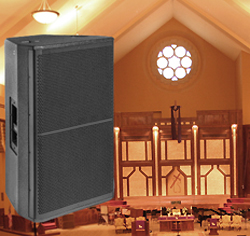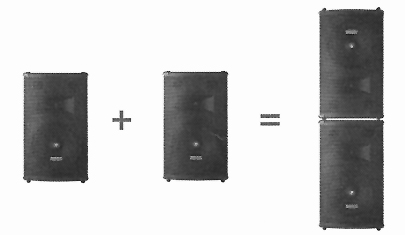Your beautiful worship sanctuary is also an “echo chamber”—a less than ideal acoustic environment. Meanwhile, your sound system is also far from ideal, perhaps purchased from the local music store mostly because the price was “right.”
Your task, and “no” is not an option: provide intelligible sound to the entire congregation. Even if the musicians and pastor are the best, how many folks will continue to attend when they can only understand every other word?
You might be aware that acoustic treatment, properly implemented, can work wonders, and/or you’re wishing to hire a qualified acoustic consultant to provide assistance. Or maybe you’re even longing for the “latest and greatest” line array loudspeakers that seem to be all the rage these days.
There’s only one tiny, insignificant problem with any of these solutions: the church simply doesn’t have the funds right now for any of them!
Don’t despair—all is not lost. Here’s a way to get much better results from the sound equipment the church already owns: use just one loudspeaker.
Wait… aren’t two always better than one, and three always better than two, and so on? Not always.
Smaller sound systems usually include two loudspeakers, and these are typically deployed so that one loudspeaker covers one-half of the room, and the other covers the remaining half.
The idea is solid: more uniform sound coverage to the entire room. And in rooms with reasonable acoustics, this indeed can offer acceptably intelligible sound. However, in very “live” rooms, the use of two loudspeakers can actually make the situation worse.
One of the major factors in determining how intelligible the sound will be for listeners is the ratio of direct sound from a loudspeaker they hear as compared with the amount of echoes and reverberant sound they hear.
Hear The Direct
Therefore, simple logic tells us that if two or more loudspeakers are used in a live room, each listener will hear the direct sound from the loudspeaker they are closest to, in addition to plenty of the reverberant sound from the other loudspeaker.
In fact, two or more loudspeakers create at least twice the amount of reverberant energy, and therefore, in a live space, the ratio of direct to reverberant sound can suffer greatly—and with it, intelligibility.

Anything that will either deliver more direct sound to the listener’s ears, or less reverberant sound from the room, can improve intelligibility. Therefore, disconnect one loudspeaker. Then position the remaining loudspeaker so that is aimed diagonally across the room, pointed at the approximate two-thirds point of the coverage area.
This can result in an amazing improvement in intelligibility and clarity. True, the overall sound coverage and level (loudness) will be less uniform, but in a “live” room, this is far more preferred than poor intelligibility.



















